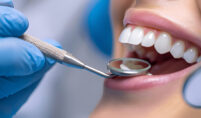
What You Need to Know About Contact Lens Safety
Around the world, millions of people depend on contact lenses as a practical way to enhance their vision. Although contacts are easy and adaptable, using them carries a lot of duty. Eye infections, pain, and other serious issues can result from improper handling and care. Using the most recent research and professional advice, this article aims to offer a thorough overview on how to use contact lenses safely. Seeing a cedar park optometrist can be an excellent first step if you need expert assistance.
Key Points
- being aware of the various kinds of contact lenses and specific maintenance needs for each.
- Methods for correctly putting in, taking out, and caring for contact lenses.
- Possible threats and strategies to avoid them.
- When to seek medical advice about wearing contact lenses.
Types of Contact Lenses and Their Care
The two primary types of contact lenses are solid gas permeable (RGP) lenses and soft lenses. For each type to remain useful and live longer, particular care practices are required.
Soft Contact Lenses
The soft, flexible plastics used to make soft contact lenses let oxygen reach the cornea. Compared to RGP lenses, they are simpler to use and easier to get used to. In order to prevent infection and guarantee comfort, soft lenses need to be carefully cleaned and disinfected using the proper solutions.
Rigid Gas Permeable Lenses
RGP lenses often provide sharper, clearer vision than soft lenses and are more resistant to deposit collection. They need a distinct method of cleaning, which frequently includes regular conditioning solutions and acid cleaners.
Proper Insertion, Removal, and Maintenance
Proper handling of contact lenses is crucial for both lens quality and eye health. The following are detailed instructions and advice for taking in, taking out, and caring for your lenses:
Insertion
- Before handling your lenses, make sure your hands are completely clean and dry.
- Make sure the lens is not inverted when you place it on the tip of your index finger.
- Holding your upper eyelid with your other hand will stop you from blinking.
- Using your applying hand’s other fingers, pull down your lower eyelash.
- Place the lens gently on the bottom portion of your eye while looking up.
- To give the lens time to settle, slowly open the lids and close your eyes.
- To center the lens on your eye, blink multiple times.
Removal
Before using your lenses, wash and dry your hands once more.
Pull down your bottom eyelid and look up.
Remove the lens by gently pulling it between your thumb and index finger.
Upkeep
Always clean and store your lenses with the suggested lens solution.
To get rid of any buildup, rinse your lenses and gently touch them with your fingers.
To lower the possibility of disease, replace your lens case every three months.
Potential Risks and Mitigation
Although, when used properly, contact lenses are generally safe, there are threats involved, including scratching the cornea and infections. To reduce these risks, you must use the right solutions, replace your lenses as suggested and follow the right lens care methods.
When to Consult a Healthcare Professional
It’s critical to see a healthcare provider right away if you feel any discomfort, redness, blurred vision, or other odd signs when wearing contact lenses. Regular checkups can also aid in avoiding contact lens-related issues.
FAQs
Can I sleep in my contact lenses?
The majority of contact lenses are not made to be worn overnight. The risk of eye infections can be increased by sleeping with lenses that are not suggested for a long time.
How frequently should my contact lenses be replaced?
The type of lens you use can affect your replacement schedule. Observe the replacement schedule that your eye care specialist suggested.
How should I respond if my contact lens hurts?
Take off the lens right away and check it for debris or damage. After cleaning and replacing the lens, if the pain remains, get in touch with your eye doctor.



